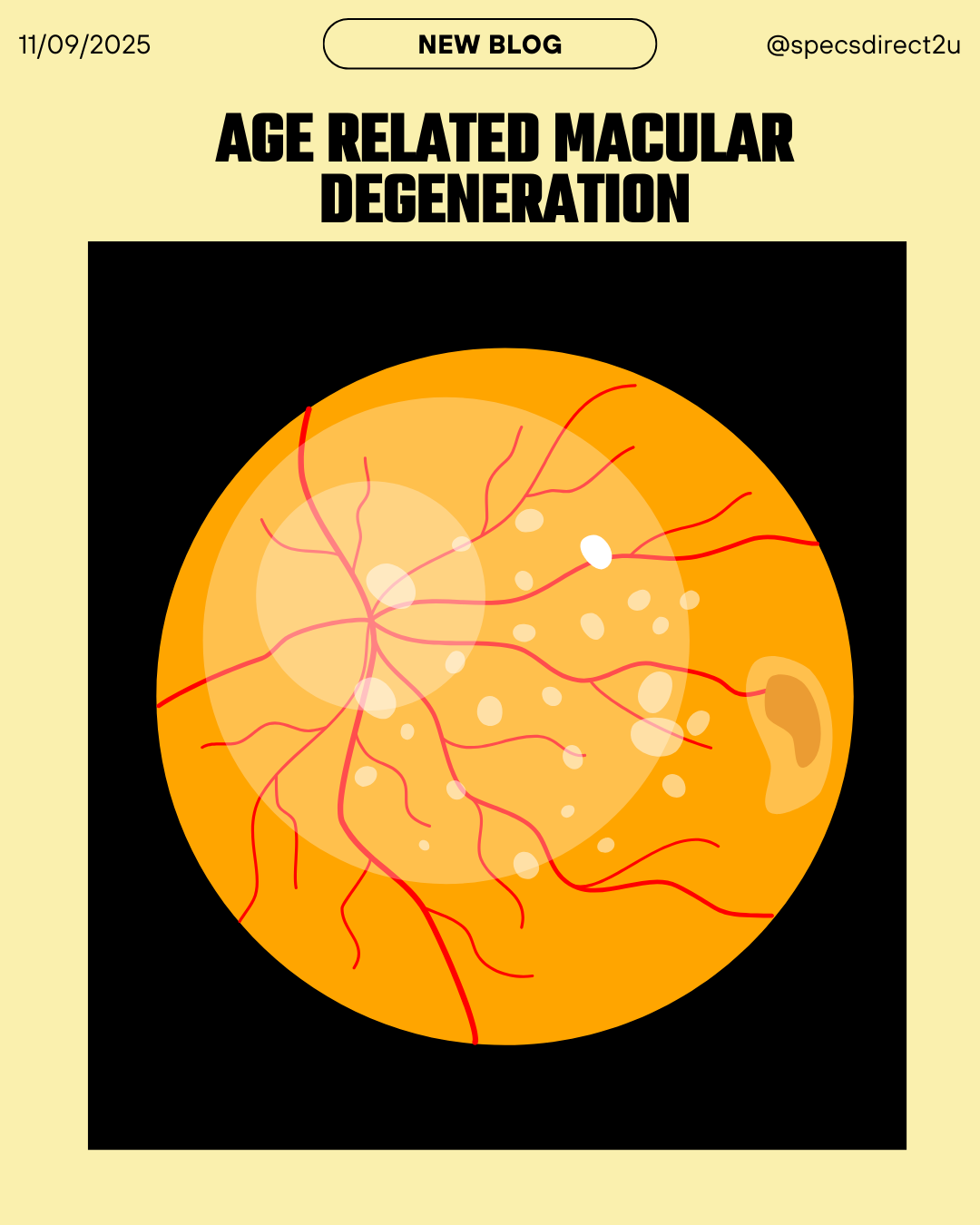Oh no! Can’t Read Up Close Anymore? Here’s the Fix
Oh no! Can’t Read Up Close Anymore? Here’s the Fix
Table of Contents
If you’ve found yourself holding your phone at arm’s length, struggling to read menus, or needing more light to see fine print, you’re not alone. These are classic signs of presbyopia, a completely normal part of ageing that affects your ability to see things up close. But what exactly is presbyopia, who does it affect, and what are your options for treating it?

Let’s break it down and explore how reading glasses, varifocals, contact lenses, and occupational glasses can help you see clearly again.
What Is Presbyopia?
Presbyopia is the gradual loss of your eye’s ability to focus on nearby objects. It typically begins in your early to mid 40s and continues to progress until around age 65. Unlike other vision conditions like short-sightedness or astigmatism, presbyopia isn’t caused by the shape of your eye, it’s due to the natural hardening of the lens inside the eye, which reduces your ability to change focus.
Who Does Presbyopia Affect?
Presbyopia affects everyone, eventually, even if you’ve had perfect distance vision your whole life. It’s not a disease or eye health issue, it’s a natural part of ageing. If you’re over 40 and find yourself struggling to read fine print, or needing brighter lighting to see up close, it’s very likely you’re experiencing the effects of presbyopia.
Symptoms of Presbyopia
Some common symptoms to look out for include:
- Difficulty reading small print, especially in dim light
- Holding reading material at arm’s length
- Eye strain or fatigue during close-up tasks
- Headaches after doing near work
- Blurred vision at normal reading distance
If you’re experiencing any of these symptoms, it’s time for an eye test to assess whether reading glasses or other options can help.
Treatment Options, Reading Glasses, Varifocals and More
When it comes to managing presbyopia, there are several effective solutions. Here’s a breakdown of the most common options:
Reading Glasses
Reading glasses are single vision lenses that help with near tasks like reading, using your phone, or sewing. They’re often worn only when needed and come in both prescription and ready-made versions.
Pros:
- Simple and affordable
- Great for occasional near work
- Can be taken on and off as needed
- Wide field of vision for reading
Cons:
- Only useful for near tasks
- Not suitable for driving or distance viewing
- Easy to lose or misplace
Best for: People who don’t wear glasses all the time and only need help for close-up work.
Varifocals
Varifocal lenses, also known as progressive lenses, offer a seamless transition between distance, intermediate, and near vision, all in one pair of glasses. They’re ideal for people who don’t want to switch between multiple pairs.
Pros:
- One pair of glasses for all distances
- No need to constantly put glasses on and off
- Modern designs minimise distortion
- Great for active lifestyles
- Corrects for computer work and dashboards in cars (anything arms length!)
Cons:
- More expensive than single vision lenses
- May take time to adapt
- Slight distortion at the edges for some wearers in standard lenses
Best for: People who wear glasses full time and want an all in one solution for distance, computer use, and reading.

Contact Lenses for Presbyopia
Don’t want to wear glasses? There are excellent contact lens options for presbyopia, including monovision and multifocal lenses.

Multifocal Contact Lenses
These lenses contain multiple zones for near, intermediate, and distance vision, similar to varifocal glasses.
Pros:
- Good vision at all distances
- Freedom from glasses
- Daily, monthly, and extended wear options available
Cons:
- May take time to adapt
- Vision may not be as sharp in all conditions, especially in dim light
Best for: People who want an all day, glasses free experience with good all round vision.
Monovision Contact Lenses
With monovision, one eye is corrected for distance and the other for near vision. Your brain learns to switch between them depending on what you’re focusing on.
Pros:
- Simple solution with standard lenses
- May offer better distance vision than multifocal lenses
Cons:
- May affect depth perception
- Takes some time to adapt
- Not suitable for everyone
Best for: Those who already wear contact lenses and want a low maintenance solution for presbyopia.
What About Occupational Glasses?
For people who do a lot of computer work and reading, such as office workers, teachers, or students, occupational lenses may be the best option. These are designed specifically for intermediate, computer, and near reading, vision, offering a wider field of view for both compared to varifocals.
Occupational glasses can reduce eye strain, improve posture, and increase productivity for anyone who spends hours at a desk.
Why Anti-Reflective Coatings Matter
No matter which lens type you choose, reading glasses, varifocals, occupational glasses, or contact lenses with occasional glasses, anti-reflective coatings are a must.
They:
- Reduce glare from screens and artificial light
- Improve visual comfort and clarity
- Make your lenses look clearer in photos and conversations
- Help reduce eye strain during long hours of screen use
Final Thoughts, Don’t Struggle, See Clearly Again
Presbyopia can be frustrating, especially if you’ve never needed glasses before. But the good news is that it’s easy to manage with a range of options, from reading glasses and varifocals to contact lenses and specialist occupational eyewear.
If you’ve noticed changes in your near vision or are experiencing any of the symptoms listed above, book an eye test with us today. Our experienced team will help you find the most comfortable and effective solution for your lifestyle.
Need advice on reading glasses, varifocals, or trying contact lenses for presbyopia?
📍Visit us in store or call to book your eye test today, we’re here to help.



